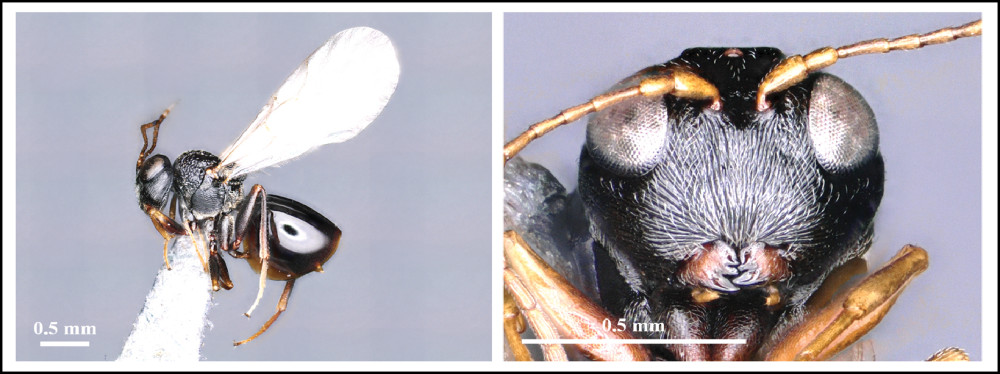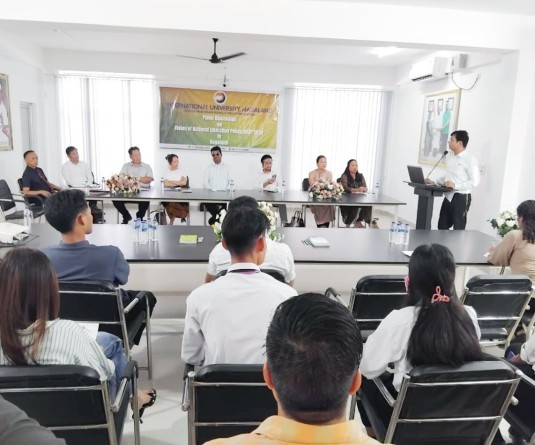The new species of inquiline wasp discovered by a team of researchers in Phek.

DIMAPUR, NOVEMBER 1 (MExN): A new species of parasitic wasp has been discovered in Phek district of Nagaland by a group of researchers.
The new species was discovered at an elevation of 1500 meters above sea level by a team comprising of Ranjith, AP, Dr Priyadarsanan Dharma Rajan from the Ashoka Trust for Research in Ecology and the Environment, Karnataka; Dr George Melika from the Plant Health Diagnostic National Reference Laboratory, Hungary; and Dr Irene Lobato-Villa and Dr Juli Pujade-Villar from the University of Barcelona, Spain.
The discovery was made during a field expedition conducted as a part of an ongoing project on ‘insect bio resources of Northeast India’ funded by the Department of Biotechnology, Government of India and has been named Lithosaphonecrusnagalandi after the state from where it was collected.
Lithosaphonecrusnagalandi are associated with bud galls of a beech tree, Lithocarpus, informed a press release from Femi E Benny, Ph.D. Scholar, Conservation Science and Sustainability Studies, Ashoka Trust for Research in Ecology and Environment, Bangalore.
Galls are abnormal growths that appear in leaves, stems, flower, fruit and roots of the plants often caused by feeding stimuli of gall inducing insects, nematodes and microbes. Galls are considered as the best model system to study insect-plant interactions. The gall inducing insects trigger and control plant growth and make the plants produce a safe home and food for the gall inducer.
More than 1,400 species of gall wasps (Hymenoptera: Cynipidae) are known worldwide induce galls on different host plants; but, about 200 species are inquilines -an organism exploiting the living space and resources of another - inside galls initiated by other gall wasps. Lithosaphonecrusnagalandi is not a gall inducer, but an inquiline of the wasp which induced the plant gall. These Lithosaphonecrus distinctly arrest the growth and development of actual gall inducers wasp and dominate inside the galls.
Lithosaphonecrusare belong to the very diverse gall inducing hymenopteran family, Cynipidae. Cynipids are the dominant insects that make galls in oak trees. The cynipid fauna of India is completely under explored, the press release informed.
Most cynipids are reported from the temperate countries and only less than 10 species are known from India. This is the first report of an inquilline cynipid wasp and the first report of the genus Lithosaphonecrus from India.
“This discovery throws light on to the needs of species inventory studies and insect plant interactions particularly on gall insect communities,” it was added.





